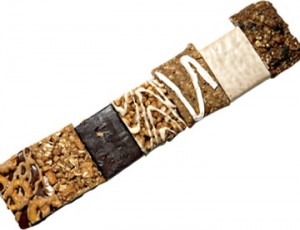By Andy Burnett
Guest writer for Wake Up World
If eating whole foods such as avocados, walnuts, and black beans sounds relatively normal to you then how do ingredients like fractionated palm kernel oil, soy lecithin, and high fructose corn syrup fit into the same discussion?
The second group of ingredients can be found in a variety of meal replacement bars, otherwise referred to as “nutritious snacks”, “energy bars”, and “protein bars” by the companies who create and distribute these products for profit.
Unfortunately, many of the ingredients found in popular meal replacement bars developed by trusted nutrition companies may disrupt normal bodily functions and are the remnants of an overly processed food supply. Ironic when you consider that many of these bars are purchased, endorsed, or consumed by health conscious athletes, fitness enthusiasts, and food purists – the same group of people who pride themselves on eating a diet rich in those whole foods I mentioned earlier.
Even worse is the purposeful placement of these bars – located right next to the bananas and oranges in most local grocery stores, making for a quick and convenient breakfast. Intelligent marketing and impeccable product placement have contributed to the general public’s misconception of these bars as a viable and nutritious substitute for real food.
It is true that processed foods contain vitamins and minerals, but oftentimes the presence of these nutrients is only possible through the process of enrichment or fortification. For example, a protein bar is fortified with ascorbic acid (vitamin C) and beta carotene (vitamin A) prior to the product being refined. This is one of the reasons our society struggles with the notion of healthy and whole foods versus processed foods containing a wide variety of vitamins and minerals. After all, people who only read what is on the surface are oftentimes misguided or innocently oblivious to the truth. The truth is these nutrition companies are not advertising the addition of additives, although considered all-natural, to their products which means a number of foreign and sometimes toxic ingredients accompany all of the goodness in a meal replacement bar.
Most people who have watched the news, read a newspaper, or skimmed over a health-related article on the internet within the past five years know of the dangers associated with hydrogenated oils, otherwise known as Trans fat. What those people may not know though is that a food label can read “no trans fat” if the product contains less than .5 grams of Trans fat per serving. This is important to know for two reasons – first, some meal replacement bars do contain Trans fat but the amount happens to be less than .5 grams per serving per bar. Second, many people consume 2 or more of these bars per day which quickly multiplies the amount of Trans fat these people are eating on a daily basis. This is alarming when you consider the findings of numerous scientific studies of hydrogenated oils; these hydrogen rich oils increase cholesterol levels more than other fats and clog our arteries at a troublesome rate.
It is hard to believe but high fructose corn syrup (HFCS) is still being used as a sweetener in a few of the most popular bars on the market. This is surprising considering the endless criticisms directed at HFCS by virtually everyone who is anyone in the health, food, or fitness industry. As it seems, the criticisms have been rightfully aimed when the reaction between the sweetener and our bodies’ systems is described as the fructose molecules in the sweetener are free and unbound, ready for absorption and utilization. [1] The concern here is that laboratory studies have shown a much higher incidence of absorption as was the case in a Princeton Neuroscience Institute study published by the journal Pharmacology, Biochemistry and Behavior. The first long-term study of the effects of high-fructose corn syrup consumption on obesity in lab animals…rats on a diet rich in high-fructose corn syrup showed characteristic signs of a dangerous condition known in humans as the metabolic syndrome, including abnormal weight gain, significant increases in circulating triglycerides and augmented fat deposition, especially visceral fat around the belly.[1] None of the preceding description sounds like a consequence of an ingredient that should be added to a food product found in the nutritional supplement aisle of many supermarkets.
As for ingredients such as palm kernel oil and soy lecithin, these are hardly what one would consider whole foods and upon further examination the extraction process manifests some dirty secrets. First, and foremost, the example of palm kernel oil drives home a fact regarding too many nutritional supplements – the companies making these products are using the cheapest ingredients possible to drive up their profit margin. Second, palm kernel oil is an unhealthy fat extracted from the pit with a gasoline-like hydrocarbon solvent. [2] And yet this is an ingredient in a popular “protein bar” packaged in a wrapper that hails itself as “the entirely natural protein bar”.
Many scientists celebrate the health benefits associated with soybean lecithin (also listed as soy lecithin). However, it is tough to appreciate the benefits of an ingredient when it comes from sludge left after crude soy oil goes through a “degumming” process.[3] Essentially, it is a waste product containing solvents and pesticides [3] , and yet we rely on food products containing this common ingredient for energy.
As a society, we are becoming increasingly dependant upon too many food sources which are highly processed. These processed foods are what many people in naturopathic circles refer to as “dead food”. Meal replacement bars are high in protein, vitamins, and minerals but as we can see many of the ingredients used to make these bars contribute to their “dead food” categorization. Energy is required to bring our food back to life – a state where our bodies are able to activate the nutrients. If we are consuming too much of this “dead food” then we are expending a significant amount of energy to digest, activate, and eliminate food that should be a source of fuel for our lives rather than a hindrance on our bodily systems.
To maximize our daily output and enhance our health, we cannot rely upon a packaged product made with low quality ingredients by a nutrition company whose bottom line concern is to yield a profit at the end of the day. Rather, we must incorporate foods into our diets that literally bring life to our bodies. Whether you are a follower of the paleo movement or a devoted vegan, odds are you are much healthier than the person who has consumed a cereal bar for breakfast, a Big Mac for lunch, and a frozen, low-calorie entree for dinner. Healthy minds and bodies require unprocessed (or minimally processed) fruits, vegetables, nuts, and quality meats – all sources of life that fuel us with energy.
So the next time you begin to think about that “energy bar” as a healthy option for breakfast or a mid-afternoon snack, think about this – it is highly likely that the ingredients in the bar demand a far greater amount of energy from your bodily systems to digest, activate, and eliminate the food source than the bar (itself) has to offer your body. In life, there are givers and takers, and a meal replacement bar embodies many of the characteristics of a taker. Eat well.
Article Sources:
1. princeton.edu
2. drweil.com
3. preventdisease.com
About the Author
Andy Burnett is first, and foremost, a husband to my beautiful wife of six years and a father to my two daughters (2 & 4 years old), a teacher (Master of Arts degree in Educational Administration) of high school aged at-risk youth for the past nine years. In 2008 (spurred by the birth of my first daughter) I began to embrace a holistic lifestyle by educating myself on the benefits of using more whole foods and herbs, and less Western adopted practices to improve my life. By way of much self experimentation – I now stand 50 pounds lighter and training for my first ultra endurance race – Noble Canyon 50k (in the mountains east of San Diego,CA). These days, I am writing about the benefits of holistic living, working with clients as a fitness coach and nutrition consultant, and enjoying the challenges of pushing myself to accomplish many physical endeavors that are viewed as impossible, crazy, or unrealistic by others. To contact Andy via email, please click here

If you've ever found value in our articles, we'd greatly appreciate your support by purchasing Mindful Meditation Techniques for Kids - A Practical Guide for Adults to Empower Kids with the Gift of Inner Peace and Resilience for Life.
In the spirit of mindfulness, we encourage you to choose the paperback version. Delve into its pages away from screen glare and notifications, allowing yourself to fully immerse in the transformative practices within. The physical book enriches the learning process and serves as a tangible commitment to mindfulness, easily shared among family and friends.
Over the past few years, Wake Up World has faced significant online censorship, impacting our financial ability to stay online. Instead of soliciting donations, we're exploring win-win solutions with our readers to remain financially viable. Moving into book publishing, we hope to secure ongoing funds to continue our mission. With over 8,500 articles published in the past 13 years, we are committed to keeping our content free and accessible to everyone, without resorting to a paywall.







